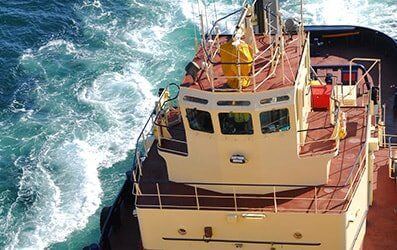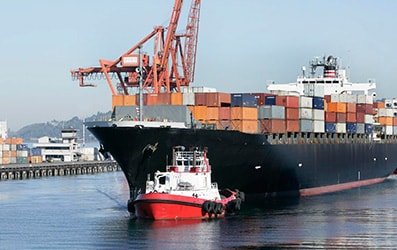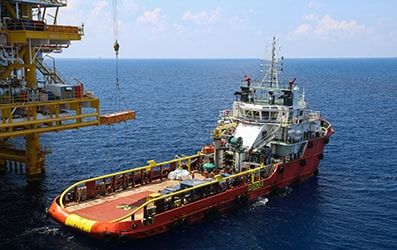Injured in a Maritime Gangway Accident? Contact Us for a Free Consultation about Your Jones Act Claim
Boarding or disembarking from a ship using a gangway or embarkation ladder should not be dangerous. Modern gangways and embarkation ladders have several safety features that are designed to prevent accidents, and vessel owners and operators are subject to several safety requirements that are designed to protect maritime workers from hazardous situations. Unfortunately, maritime gangway accidents and accidents involving embarkation ladders remain common. There are several reasons why.
Most of these reasons have to do with a lack of commitment to safety. Instead of prioritizing maritime workers’ safety, vessel owners and operators prioritize speed. Time is money, and many companies see time spent making sure workers are safe as time wasted. As a result, they cut corners. Even if they don’t necessarily intend to put workers in harm’s way, they make risky decisions that result in accidents that could—and should—have been avoided.
Common Causes of Maritime Gangway Accidents
Several factors can lead to maritime gangway accidents. These factors range from issues with the gangway itself to how the gangway is rigged, and from inadequate safety equipment to inadequate training. Our firm represents maritime workers who have been seriously injured in all types of gangway and embarkation ladder accidents, including those involving:
Gangway Rigging Accidents
Many accidents occur during gangway rigging. While a gangway is being rigged, many of the safety features that are designed to protect maritime workers during boarding and disembarking are not yet in place. Without adequate protections in place, even highly experienced riggers can suffer injuries due to slips, collisions with the side of the vessel and other accidents.
Accidents Caused By Negligent Gangway Rigging
Negligent rigging is also a common cause of gangway accidents. If a gangway has not been rigged correctly, maritime workers using the gangway can unexpectedly find themselves in dangerous or life-threatening scenarios. Improperly rigged safety nets and sidelines, loose or missing stanchions, and unsecured gangways all present risks for serious or fatal injuries.
Angled Bottom Platforms
To allow for safe boarding and disembarking, the bottom platform of a gangway should be as level as possible. If a bottom platform is angled, this significantly increases the risk of a slip and fall into the water or onto the waiting vessel below.
Missing Stanchions
A properly-rigged gangway will have appropriately installed stanchions at evenly spaced intervals. These stanchions provide support for the sidelines that maritime workers use to maintain their balance. When a gangway is missing stanchions, sidelines can sway significantly, and workers may either be forced to try to climb or descend the gangway without using their hands or lose their balance when the sideline swings out over the water.
Slippery Gangways or Embarkation Ladder Rungs
Seawater and rainwater can both make gangways and embarkation ladders extremely slippery. Not only can maritime workers suffer serious injuries in the event of a slip and fall, but they can also cause others to fall and suffer injuries as well.
Exceeding a Gangway’s Safe Weight Limit (SWL)
All maritime gangways have a safe weight limit (SWL). This is the maximum load that a gangway can support safely. Exceeding a gangway’s SWL can be dangerous, and this commonly happens in two scenarios: (i) too many maritime workers use a gangway at the same time, or (ii) bouncing caused by a heavy load increases the effective weight of the workers using a gangway resulting in the gangway’s failure.
Inadequate Gangway or Embarkation Ladder Maintenance
Inadequate maintenance of gangways and embarkation ladders can present several risks for maritime workers. Bolts and other fasteners can come loose, connection points can become weak over time, and rust and corrosion can cause gangways and embarkation ladders to fail.
Raising or Lowering Gangways During Use
A gangway should never be raised or lowered while in use. Raising or lowering a gangway while maritime workers are still attempting to board or disembark a vessel is extremely dangerous and frequently results in falls.
Embarking or Disembarking in Dangerous Conditions
Even if a gangway is properly rigged and stable, embarking or disembarking in dangerous conditions can still lead to injuries. High seas, strong winds, heavy rains and other environmental hazards can all significantly increase the risks of attempting to board or disembark a vessel on the water.
No Lifejacket, Harness or Other Safety Equipment
Another common factor in maritime gangway accidents is inadequate access to safety equipment. Lifejackets and harnesses are essential for safely rigging gangways, embarking and disembarking. Too often, vessels do not have necessary safety equipment onboard, or maritime workers are rushed to embark or disembark without being given enough time to equip themselves.
Maritime Workers’ Rights After Gangway Accidents
If you have been injured in a maritime gangway accident, you have clear legal rights. The Jones Act protects maritime workers who qualify as “seamen,” while the Longshore and Harbor Workers’ Compensation Act (LHWCA) protects those who work in primarily land-based maritime occupations.
Both of these laws entitle workers to “no-fault” benefits when they suffer injuries in maritime gangway accidents. But, in many cases, injured workers will be able to file fault-based claims for additional compensation. This is especially important in cases involving serious injuries, as “no-fault” benefits do not cover all of the costs workers who suffer these injuries will incur.
Regardless of what happened, if you were injured in a maritime gangway or embarkation ladder accident, you should discuss your legal rights with an attorney promptly. You need to be careful to protect your rights; and, if you make mistakes, you could end up without the compensation you deserve.
How Much Can You Recover for Your Gangway Accident?
The amount you can recover for your gangway accident depends on the specific circumstances involved. In some cases, injured seamen will be limited to collecting maintenance and cure benefits. These benefits cover the costs of treating maritime job-related injuries, and they provide a small stipend to help cover seamen’s living expenses while they are unable to work.
But, if you have a fault-based claim against your employer or the vessel owner, you may be entitled to full compensation for all of your accident-related losses. This includes not only full coverage for your medical bills and lost wages, but also compensation for your pain and suffering, emotional trauma, loss of consortium and companionship, and loss of enjoyment of life. To determine how much compensation you should seek for your gangway accident, you will need to discuss your case with an experienced attorney.
Contact Us for a Free Consultation about Your Maritime Gangway Accident Claim
Our firm has been helping injured maritime workers protect their legal rights for decades. If you believe you may have a maritime gangway accident claim, we encourage you to contact us promptly for a free consultation. To discuss your legal rights in confidence as soon as possible, call 800-468-4878 or get in touch online now.









